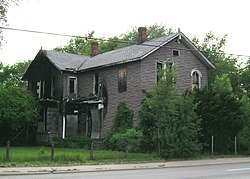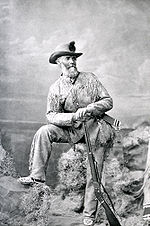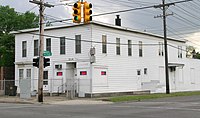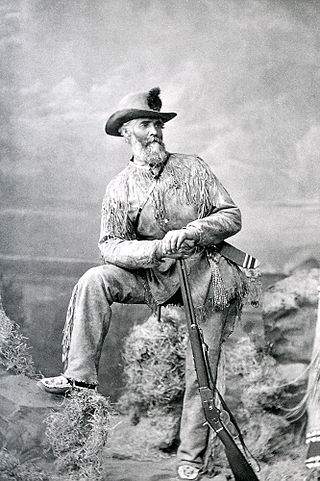
Philetus W. Norris was the second superintendent of Yellowstone National Park and was the first person to be paid for that position.

Indian Village is a neighborhood located in Detroit, Michigan, bounded to the north and south by Mack Avenue and East Jefferson Avenue, respectively, along the streets of Burns, Iroquois, and Seminole. The district was listed on the National Register of Historic Places in 1972.
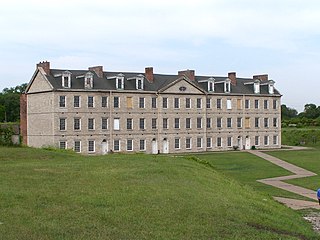
Fort Wayne is located in the city of Detroit, Michigan, at the foot of Livernois Avenue in the Delray neighborhood. The fort is situated on the Detroit River at a point where it is under half a mile to the Ontario shore. The original 1848 limestone barracks still stands, as does the 1845 fort. On the grounds but outside the original fort are additional barracks, officers quarters, a recreation building, a theater, commissary, guard house, garage, and stables. A large warehouse and the post fire station were torn down in 1976 and the two-story hospital was torn down in 2007.
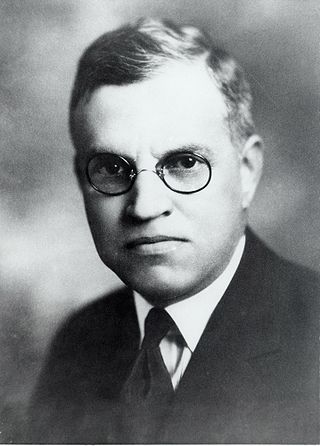
Robert Chambers Reamer (1873–1938) was an American architect, most noted for the Old Faithful Inn in Yellowstone National Park. A number of his works are listed on the National Register of Historic Places for their architecture.
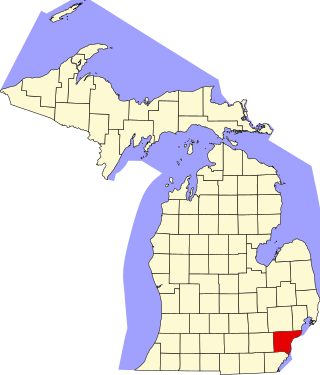
This is a list of the National Register of Historic Places listings in Wayne County, Michigan.

The Brush Park Historic District is a neighborhood located in Detroit, Michigan. It is bounded by Mack Avenue on the north, Woodward Avenue on the west, Beaubien Street on the east, and the Fisher Freeway on the south. The Woodward East Historic District, a smaller historic district completely encompassed by the larger Brush Park neighborhood, is located on Alfred, Edmund, and Watson Streets, from Brush Street to John R. Street, and is recognized by the National Register of Historic Places.

Obsidian Cliff, also known as 48YE433, was an important source of lithic materials for prehistoric peoples in Yellowstone National Park near Mammoth Hot Springs, Wyoming, United States. The cliff was named by Philetus Norris, the second park superintendent in 1878. It was declared a National Historic Landmark in 1996.

The Dearborn Inn, A Marriott Hotel is a historic hotel in the suburban city of Dearborn, Michigan in Metro Detroit. It opened in 1931 and closed in February 2023 for renovations. It was conceived by Henry Ford, who saw a need for food and accommodations for visitors flying into the nearby Ford Airport, making it one of the first airport hotels. It is located at 20301 Oakwood Boulevard near The Henry Ford and the world headquarters building of Ford Motor Company. Albert Kahn designed the Dearborn Inn in the Georgian architectural style. The Dearborn Inn is owned by Ford Motor Land Development Corporation and managed by Marriott International.

The Queen's Laundry Bath House is a ruinous structure in Yellowstone National Park. The log building sits on the edge of the Queen's Laundry thermal feature in the Lower Geyser Basin. The water at this location is somewhat cooler than the norm, allowing early tourists to bathe. Begun by Yellowstone park superintendent Philetus Norris, the bath house was intended to have two rooms and a dirt-covered roof, but was never completed. Begun in 1881, it may be the oldest extant park visitor structure in the National Park Service system.

The following articles relate to the history, geography, geology, flora, fauna, structures and recreation in Yellowstone National Park.

The East Jefferson Avenue Residential District in Detroit, Michigan, includes the Thematic Resource (TR) in the multiple property submission to the National Register of Historic Places which was approved on October 9, 1985. The structures are single-family and multiple-unit residential buildings with construction dates spanning nearly a century, from 1835 to 1931. The area is located on the lower east side of the city.

Cook Peak, elevation 9,754 feet (2,973 m), is a mountain peak in the Washburn Range of Yellowstone National Park. The peak was named in 1922 by then-superintendent Horace Albright to honor Charles W. Cook, a member of the 1869 Cook–Folsom–Peterson Expedition which explored the Yellowstone park region; 1922 was the 50th anniversary of the park's creation, and Cook, still living in Montana, attended ceremonies in the park. Prior to 1922, the peak had been named Thompson Peak by Philetus Norris in 1880 and Storm Peak by members of the Arnold Hague Geological Surveys in 1885.

Dunraven Peak el. 9,869 feet (3,008 m) is a mountain peak in the Washburn Range of Yellowstone National Park. In 1874, just two years after the park's creation, The 4th Earl of Dunraven and Mount-Earl, an Anglo-Irish peer, made a visit to Yellowstone in conjunction with a hunting expedition led by Texas Jack Omohundro to the Northern Rockies. Lord Dunraven was so impressed with the park, that he devoted well over 150 pages to Yellowstone in his The Great Divide, published in London in 1874. The Great Divide was one of the earliest works to praise and publicize the park.

Virginia Cascades, is a cascade type waterfall on the Gibbon River in Yellowstone National Park. Virginia Cascades is located just south of the Norris-Canyon road approximately 2.5 miles (4.0 km) east of Norris Junction. A one-way road provides access to the north side of the cascades.

The Sheldon Inn was a two-story apartment building located at 44134 Michigan Avenue, in Sheldon Corners in Canton Township, Michigan. It was built in 1825, and previously used as a single-family home and a travelers' inn. It was listed on the National Register of Historic Places in 2000. It was demolished in 2021.

The East River Road Historic District is a historic district located along East River Road near the Grosse Ile Parkway in Grosse Ile, Michigan. The district is a small island community composed of eleven structures, including seven houses, two outbuildings, St. James Episcopal Church, and the Michigan Central Railroad depot. The district stretches from St. James Episcopal Church on the south to Littlecote on the north. The district was designated a Michigan State Historic Site in 1972 and listed on the National Register of Historic Places in 1973. The historically significant 1870s customs house was moved into the district in 1979.

The Philetus S. Church House is a private house located on North Shore Road, 1 mile (1.6 km) southeast of Payment Settlement on Sugar Island, Michigan. The building is the last structure from Church's Landing, a mid-19th century trading post and steamboat stop. It was listed on the National Register of Historic Places in 1982.

Woodmere Cemetery is at West Fort Street and Woodmere Avenue in Detroit, Michigan, in the neighborhood of Springwells Village in what was originally the township of Springwells. Woodmere Cemetery is operated by the Midwest Memorial Group.
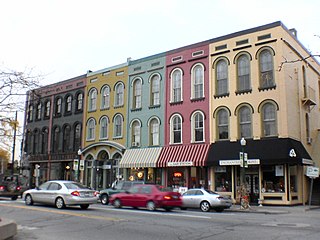
The Ypsilanti Historic District is a historic district located along several blocks on each side of the Huron River in the center of Ypsilanti, Michigan. The original portion of the district was designated a Michigan State Historic Site in 1973 and listed on the National Register of Historic Places in 1978; additions to the district were nationally listed in 1989.

The Village of Clarkston is located in the southern part of Independence Township, Michigan along M-15.
